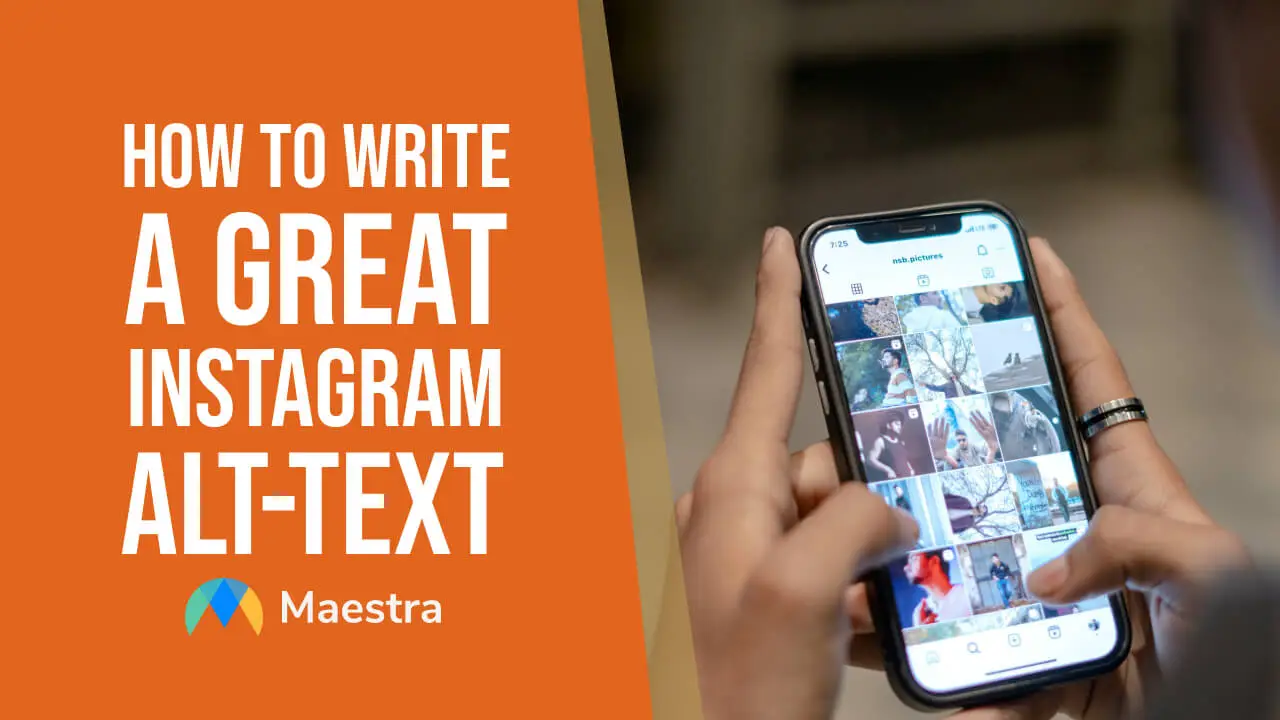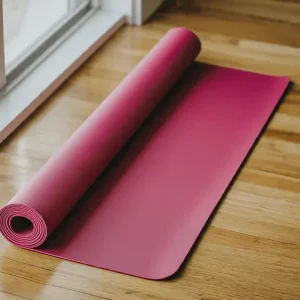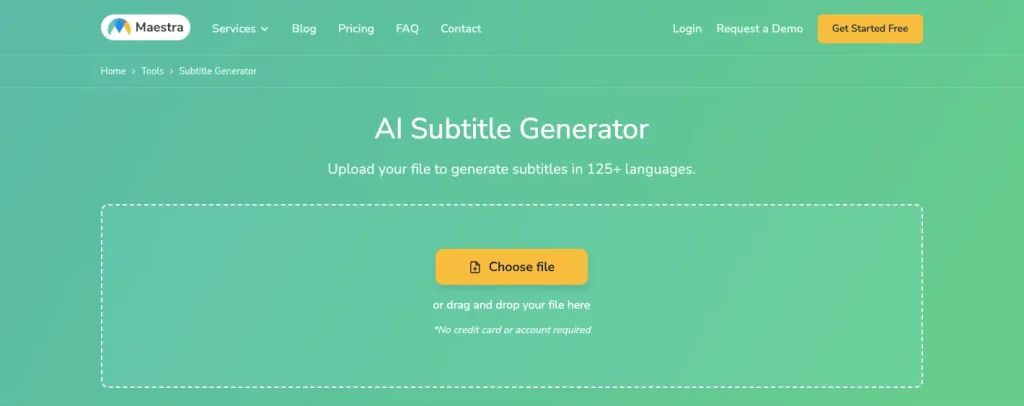How to Write Great Instagram Alt Text (with 10 Examples)

A critical component of social media accessibility, Instagram alt text serves several vital roles. Embracing it not only demonstrates a commitment to inclusivity but also expands the reach of your content.
In this blog, we will share the simple instructions on how to add or edit Instagram alt text and highlight its benefits. Then, we will list 10 best practices you can adopt when writing alt text on Instagram and share examples for guidance. Finally, we will look at the 3 other major ways to make your Instagram content more accessible.
Let’s dive in.
What is Instagram alt text?
Instagram alt text (short for alternative text) is a written description that you can add to your posts. The feature is for visually impaired people using screen readers. It contributes to making the platform more inclusive for individuals with varying abilities.
Instagram users can manually or automatically add alt text to their post to describe its key elements and details. Screen readers can read the text aloud, enabling visually impaired users to comprehend the content.
Why You Should Add Alt Text on Instagram
Adding alt text is a crucial practice important for several reasons. Here’s a deeper look at why it matters:
Accessibility
Instagram alt text is fundamentally about ensuring everyone has equitable access to your content. By crafting a well-written alt text, you offer a better experience to users relying on screen readers. Meanwhile, from the creators’ perspective, it allows them to share their experiences with a diverse audience with different needs.

SEO Performance
Search engines, including Instagram’s own search, depend on text-based information to understand the relevance of images to user queries. By thoughtfully incorporating relevant keywords to your alt text, you give search engines better clues about your post’s topic. This increases your content’s discoverability and visibility, potentially driving more traffic to your Instagram posts.
Contextual Understanding
Alt text not only benefits visually impaired users but also offers advantages in various situations, providing additional context to viewers. People can still see a text description of your post even if it fails to load. This clarity can be essential for businesses, influencers or anyone seeking to effectively communicate their message through Instagram.
How to Add Alt Text to Instagram Posts
Now let’s take a look at how you can add Instagram alt text to your posts in a few simple steps. Just follow these instructions:
- Start by creating a new post.
- Tap “Next” and then scroll down to see “Advanced settings.” Tap on it.
- You will see “Write Alt Text” under “Accessibility.”
- Tap it and write your description in the text field.
- Tap “Done” to save your description.
- That’s it. Now you can return and share your post.

What if you want to add alt text to a post you’ve already shared? Or you want to edit the alt text you’ve written before for a post?
- Go to your post and tap “...” at the top right corner.
- Tap “Edit.”
- “Edit Alt Text” option will appear in the bottom right corner of your image. Tap it to write a description in the text box.
- Tap “Done”.
- The changes are saved and now your post has an alt text.
How to Write Instagram Alt Text (Best Practices)
There are two ways to write alt text on Instagram. You can write a description manually or use an alt text generator (like this free AI image alt text generator by Ahrefs) to automate the process.
Whichever method you choose, you must adopt certain practices to provide meaningful and accessible Instagram alt text to users. Here are 10 useful tips that can help you craft that perfect description.
Define the Image Clearly
Always remember that alt text’s primary function is to convey the visual content of an image to those who can’t see it. That’s why you should clearly describe the image by focusing on key objects, actions and the overall setting in the post.
Let’s say you have the image of a coffee mug and a croissant.

Bad Instagram alt text example: Coffee and breakfast.
Why it’s bad: Too vague. Doesn’t specify the coffee mug, breakfast food or the setting.
Good Instagram alt text example: Close-up of a white ceramic coffee mug and a croissant on a rustic wooden table.
Why it’s good: Clear and descriptive. The adjectives create a mental picture.
Stay Objective
Neutrality is key when writing Instagram alt text. Stick to facts, avoid sharing opinions and allow users to form their own impressions. This will ensure that people with visual impairments receive an accurate and unbiased representation of the image.
Let’s say you have a puppy image.

Bad Instagram alt text example: Adorable puppy ready for adoption.
Why it’s bad: This description is subjective and focused on emotional appeal.
Good Instagram alt text example: Brown and white puppy with floppy ears sitting upright in a metal puppy kennel.
Why it’s good: Sticks to verifiable neutral facts and removes all interpretation.
Put People in Focus
When people are featured in the post, prioritize describing their physical appearance, actions and expressions. Start with immediate evident aspects like approximate age range (child, young adult, elderly), skin tone, hair color and length, gender and clothing style. Then describe what the person is doing and any notable facial expressions that convey emotion.
Important! You must avoid assumptions. Don’t try to guess a person’s gender identity, race or other characteristics unless they are clearly evident in the image.
Let’s say you have the image of a woman.

Bad Instagram alt text example: Beautiful Asian woman smiling at the camera.
Why it’s bad: “Beautiful” is a subjective opinion and not descriptive.
Good Instagram alt text example: Woman of Asian descent with long black hair smiling and wearing a yellow sweater.
Why it’s good: Focuses on observable physical elements and actions. “Woman of Asian descent” is a broader term, which is more appropriate than interpreting the person’s identity.
Incorporate Keywords Strategically
Think like a search engine. You must have relevant keywords in your Instagram alt text to improve your visibility in search results. Choose keywords that accurately represent the content of the image and align with the broader context of your Instagram account.
Important! Never force and stuff keywords as this will do more harm than good. It makes the alt text useless for screen readers and search engines may penalize your posts.
Let’s say you have the image of a yoga mat.

Bad Instagram alt text example: Buy yoga mat best yoga mat exercise fitness yoga cheap yoga mat
Why it’s bad: This reads as spammy. It has too many repetitive keywords and doesn’t really describe the image.
Good Instagram alt text example: Pink yoga mat unrolled on a hardwood floor, ready for a home workout.
Why it’s good: As likely search terms, “yoga mat” and “workout” are naturally incorporated into the sentence.
Keep It Concise
While there was a 100-character limit for Instagram alt text previously, it seems like the platform has removed this limit. Still, we recommend you keep the description concise and not to overwhelm the screen reader experience. Avoid filler words and cut unnecessary phrases that don’t truly add information.
Let’s say you have the image of a sunset.

Bad Instagram alt text example: This picture shows a really inspiring sunset on the mountains, with the sun between the fluffy white clouds and casting long, dramatic shadows on the majestic pine trees.
Why it’s bad: Too long, hard to process, drowning in the details.
Good Instagram alt text example: Sunset over the mountains casting long shadows on pine trees.
Why it’s good: Easy to understand and includes the essential elements (sunset, mountains, pine trees).
Prioritize Key Information
Screen readers might cut off information so it’s better to put key elements at the beginning of your Instagram alt text. This will increase clarity and make it easier for users to quickly grasp the overall content. So don’t hesitate to be a ruthless editor and eliminate words or phrases that aren’t strictly necessary.
Let’s say you have the image of a man relaxing on a hammock.

Bad Instagram alt text example: There are fluffy white clouds in the bright blue sky, and below is a man with glasses, smiling peacefully while relaxing on a hammock.
Why it’s bad: The essential visual element (man relaxing on a hammock) is at the end and the screen reader may cut it off.
Good Instagram alt text example: Man with glasses relaxing on a hammock under blue sky with clouds.
Why it’s good: Includes all essential information without being wordy and lengthy.
Proofread Carefully
Typos will lower the quality of your description. Plus, you must avoid special characters, emojis or unusual symbols as screen readers may not correctly recognize or interpret them. This can cause glitches and disrupt the smooth narration of the visual content.
Let’s say you have the image of a t-shirt.

Bad Instagram alt text example: Gren t-shirt with funny racoon meme 🙂
Why it’s bad: “Gren” typo makes the color hard to decipher for a screen reader and the smiling emoji won’t be conveyed verbally.
Good Instagram alt text example: Green t-shirt with a racoon print on it wearing a pirate hat.
Why it’s good: No typos and special characters, uses descriptive words to replace the meme concept.
Include Text Overlays
If your image includes text (motivational quote, product name, etc.), don’t forget to add this information to your Instagram alt text. Transcribe the in-image text exactly as written and refrain from flowery descriptions. You can provide context if the text only makes sense with the larger image.
Let’s say you have a motivational quote as the in-image text.

Bad Instagram alt text example: Inspirational quote on believing in yourself.
Why it’s bad: It doesn’t include the actual quote.
Good Instagram alt text example: Quote “If you believe in yourself, anything is possible.” on a beige canvas tote bag.
Why it’s good: Transcribes the actual quote and adds context for clarity.
Mention Your Brand Subtly
If the image features your product, you can mention your brand within the alt text to boost search discoverability and brand awareness. Yet always prioritize the description and then weave in your brand name if it sounds natural. Don’t force this as it will feel spammy and harm the user experience.
Let’s say you have the image of a shoe by your brand.

Bad Instagram alt text example: Buy our new amazing sneaker! Best running shoe ever from (Brand Name).
Why it’s bad: Overly promotional, more like an ad than a description. Forces the brand name awkwardly.
Good Instagram alt text example: (Brand Name) leather sneaker in gray with cushioned white sole.
Why it’s good: Includes the brand name organically while accurately describing the product.
Update Text for Carousels
When writing Instagram alt text for carousels, describe each image individually. Screen readers progress linearly, making repetitive alt text unhelpful. Moreover, using diverse and relevant keywords across your images can boost Instagram SEO.
Let’s say your carousel shows the process of pasta making.
Bad Instagram alt text example:
Image 1: Pasta recipe
Image 2: Pasta recipe
Image 3: Pasta recipe
Why it’s bad: No description, repeats the same generic keyword without any specifics.
Good Instagram alt text example:
Image 1: Close-up of hands kneading dough on a floured surface.
Image 2: Dough rolled out in a thin sheet on a wooden table.
Image 3: Fresh pasta strands hanging on a drying rack.
Why it’s good: Each image is described distinctly and guides users through the process.
3 Ways to Make Your Instagram Content More Accessible
Accessibility is a broad and ongoing practice. While Instagram alt text is a significant aspect of it, there are also other ways to make the platform more inclusive to users with different needs. Here are 3 things you can do to extend accessibility beyond alt text.
Add Subtitles and Closed Captions
Subtitles and closed captions make content accessible to a wider audience including deaf and hard of hearing individuals, those in noisy places and who watch content in a non-native language. Be mindful of the following when adding them:
- Accuracy is paramount. Misspelled words or inaccurate timing can frustrate viewers.
- Clear fonts, good contrast and appropriate placement are also crucial.
- Make sure that your subtitles and closed captions do not obscure the important visual elements.
Tip: Instagram offers built-in auto-generated captions but it’s best to use a third-party platform for improved accuracy. You can utilize Maestra’s AI subtitle generator or online caption maker, as they both come with a high accuracy rate, and instantly add subtitles to videos in 125+ languages.

Choose Appropriate Visuals
Choosing the right visuals on Instagram will ensure that people with visual impairments, color blindness and photosensitive epilepsy can fully engage with your content. You can:
- Aim for high contrast, which makes your content readable for those with color blindness and low vision. Use a tool like WebAIM’s color contrast checker for good ratios.
- Avoid flashy content as this can trigger seizures or discomfort for some viewers.
- Refrain from overly decorative fonts for easy reading by everyone.
Craft Engaging Captions
A well-written Instagram caption can promote accessibility by providing context beyond visuals and offering an alternative for audio. For effective caption writing, you can:
- Be descriptive but not excessive. Give enough details but don’t write a novel.
- Be mindful of inclusive language and not use offensive terms.
- Capitalize the first letter of each word in hashtags (#AccessibilityMatters), which makes them easier for screen readers to distinguish.
Frequently Asked Questions
Can you add an alt text to an Instagram reel?
As of February 2024, you cannot directly add alt text to Instagram reels. Reels are primarily video-based, and alt text is designed for static images. However, you can add a voiceover to your reels to describe the visuals.
Why is my Instagram not showing alt text?
Unfortunately, there’s no way to view Instagram alt text added by others. Currently, the platform only lets you see alt text on your own posts.
Should I put hashtags in my Instagram alt text?
Putting hashtags in your Instagram alt text is generally not recommended. Hashtags can disrupt the flow of the description and make it harder for screen readers to understand it. Utilize the caption space to place your hashtags for maximum discoverability.
Can AI generate alt text?
Absolutely! AI models can analyze the image, identify objects, actions and the overall context. Two popular options for AI alt text generation are Microsoft Azure Image Analysis and Alttext.ai.
Is there alt text on Threads?
Yes, the alt text feature exists on Threads. You can locate the “Alt” button (often in the bottom left corner) when uploading an image. Check Instagram’s Help Center for more information on how to edit alt text for posts on Threads.
Summary
This blog shared step-by-step instructions on how to add or edit Instagram alt text and emphasized why you should embrace this practice. It then listed 10 tips on how to write alt text for your Instagram posts with visual description strategies and examples. The blog also covered the 3 other ways to make your Instagram content more accessible.
Mastering Instagram alt text is crucial for building and fostering an inclusive online community in an era where accessibility and diversity are paramount. It’s essential to regularly follow the updates of Instagram to stay ahead of the curve. The platform and assistive technologies evolve continuously, so it’s best to familiarize yourself with new accessibility features and best practices.
